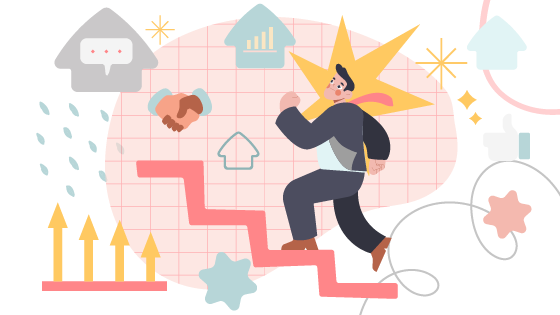Humans learn by challenging assumptions. Take the 90’s. Many scientific theories from that era, widely accepted as fact, don’t hold water today because of bold people questioning their veracity. Earth isn’t the only planet that has water! Cavemen were really quite intelligent! Today, we ask you all to rise up with us and debunk the 70-20-10 model for learning and development; another 90’s era relic inapplicable to the modern workplace.
Ready to create a learning experience tailored to your audience? Contact Us Today!
Back up and look at everything holistically, with new eyes, because that’s the only way you are going to reach the modern workplace learner. - Jack Makhlouf, Founder, CLO of ELM
What’s the 70:20:10 Learning Model?
The 70-20-10 Learning Model was popularized in 1996 when Morgan McCall, Robert Eichinger, and Michael Lombardo, three researchers from The Center for Creative Leadership wrote about it in The Career Architect Development Planner.
Most people today argue that the data set, taken from 200 participants, wasn’t big enough to be conclusive, and we agree. Somebody needs to do an updated study with a larger dataset.
But that’s not the issue.
The issue is, many corporations are still using this model as a formula when designing their programs today, even though it’s outdated and simply won’t work.
Why You Should Not Implement the 70-20-10 Training Model in Your Business
The world has changed. 70-20-10 is perfectly equipped to inherit a world that no longer exists. - Jack Makhlouf, Founder, CLO of ELM
The model won’t work anymore for two reasons:
People don’t learn in neat little measuring bowls, with no other types of learning peppering in and cross-contaminating that experience. Corporations too often look at the model and think Ok. We will have 30% of an employee’s time taken up with mentorship activities and 10% taken up with training and so on. You can’t have learning experiences that worked independently of each other.
This is the dawn of social experiential learning and all of its flavors. We’ve undergone a revolution in the workplace because of advances in social tools, gamification, and collaborative learning environments. The social piece (formally alluded to in the 30 percent of the model) is much bigger—maybe even bigger than the on the job learning piece (the 70 percent). The modern worker has changed the matrix of cross-functional teams and work with social tools, like Slack, Basecamp, etc.
Building Your New 70:20:10 Development Plan in 2018
Taking into account the huge rise of social learning, 40-40-20 feels more like today’s world in the corporate space, so let’s make it the new model. It’s more realistic, because it’s messy, with social learning spilling into every category.
- Learning on the job (formally the 70 percent) is still a big percentage at 40 percent as people are still crafty and independent, but they usually work on projects in groups (some social spilling in there).
- Feedback happens not just face-to-face, but with those social tools mentioned in point #2 above, so social is almost constant (the former 20 percent now 40 percent).
- We’ve over-digitized the workplace and people are craving human connection. Digital learning often takes the form of a virtual session where learners have the ability to chat, learn bite-sized pieces on mobile phones, or through gamification where they compete with their co-workers. (Formally the 10 percent, now 20 with added social).
Implementing the 40-40-20 Model with the Top Learning Activities
This is a call to action implement holistic learning experience design (LED). Take a big step back from all this dogma and understand your audience. Use data and insights to guide your decision making. Blend experiences that give room for individual preferences, for social experiential learning, and above all, offer a myriad of choices. Design choice into your programs so that people can navigate in their own way depending on their individual needs, speed, competencies, skills, and interests. Create a learning experience tailored to your audience with the content founded on data and design, fun, choices, and a lot of social engagement.
Author: Jack Makhlouf; Founder and Chief Learning Officer
Designer: Dana Owens, Designer at ELM






